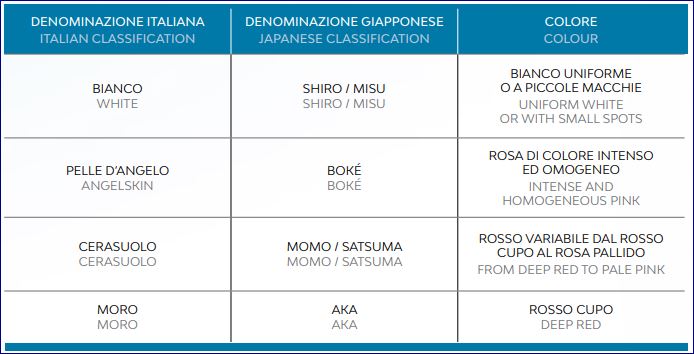CORAL: RED GOLD THROUGH THE CENTURIES

Coral has accompanied man since prehistoric times, used in Western and Eastern cultures for ornamental, therapeutic and apotropaic purposes. It was found in Celtic and Phoenician tombs, used by the Egyptians and by the Greeks to protect the harvests, a symbol of fertility for the Masai, used in Ayurvedic medicine to treat various diseases and by Tibetan Lamas as a rosary. This miracle of nature, with its bright colours, has always been highly sought-after and widely used in jewelry. Until 1700 it was considered a strange sea plant that solidified in open air, even if it is actually made of calcium carbonate and small percentages of magnesium carbonate and protein-based organic compounds deposited by colonies of small octopuses, growing into bushes with twisted trunks and branches which may be found both in the Mediterranean and in Eastern seas anywhere from 25 metres in depth to a maximum of 200 metres. The limestone skeleton is used whereas the whitish external layer called " coenosarc" is removed.
There are over 20 identified coral species, though only 6 can be crafted and used in jewellery, recognised according to their geographic origin: Elatius, Japonicum and Konojoi (Sea of Japan and China), Secundum (Hawaii) and Rubrum and Sciacca (Mediterranean). The Mediterranean Sea has always been home to different coloured corals ranging from light to dark red, with trunks reaching a maximum diameter of 1.50 cm, highly suitable for beads, spools, barrel beads, etc. Though less common, very light pink corals exists as well. Sciacca coral, named after the location where three groups of the coral were discovered between 1875 and 1887, is set apart from the other Mediterranean corals. This specific coral, ranging from bright to pale salmon-pink, extinct due to underwater volcanic eruptions, was overexploited up until 1915 and today is completely depleted. Over centuries, Italy specialised in the coral industry, initially with the work of masters from Trapani, then replaced by Torre del Greco artisans in the early 19th century, fishermen and skilful artisans working with coral even imported from Japan since 1889. Eastern coral displays larger branches and is more suitable for statuettes and cameos. Ranging from white to deep red, the colours are never homogeneous, but always present a pink "spine" in light corals and a white one in red corals.

Appraising the value of coral takes into consideration the size, colour, homogeneity, and the absence of cracks, faults or marks. With a lens you can spot thick grooves along the axis of rough branches, and wheel-like spokes or concentric circles in the grains. Though imitations may be easily identified under a lens, treatments with infusing varnishes and resins that enhance the corals’ appearance but decrease their value are more difficult to spot. Nowadays, coral grows slowly and with difficulty due to sea pollution; it suffers from the disastrous effects of bottom trawling which has destroyed and exhausted numerous groups of corals over the years. This has led to the implementation of laws controlled by CITES, which have restricted the coral business by making coral a protected species and have introduced a selective, extremely wellregulated collection where divers harvest by hand. All of these factors, together with the dynamic Chinese market, increase the prices of the top quality items, as witnessed by the results achieved in our previous auctions; necklaces with large beads or items with aka and bokè coral are highly sought-after.
Coral care is fundamental; as a soft and porous organic compound it may be scratched, it should be protected from extreme changes in temperature and as a limestone it reacts to acids, alcohol and acetone, often undergoing irreversible damage. The loss of shine through use may however be restored thanks to professional cleaning. (by Maria carla Manenti)
